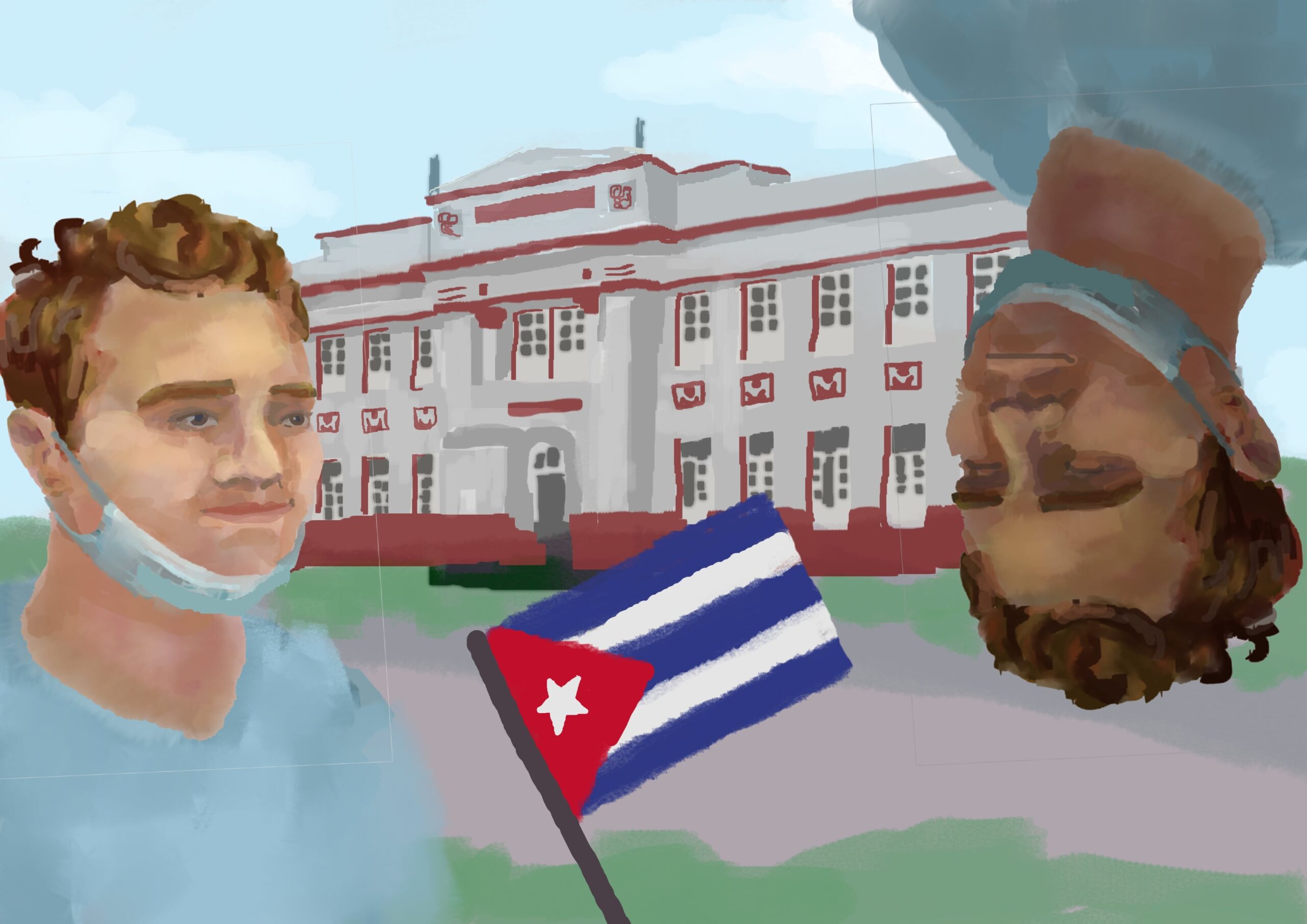Written by Kayla Sagiz
In a world where access to quality healthcare is often limited by financial barriers, Cuba stands as a unique example. The country’s healthcare system, deeply rooted in its revolutionary socialist ideology, considers healthcare as an inherent right of every citizen. With a focus on prevention and a commitment to offering a wide range of medical services, Cuba has managed to achieve exemplary success in the field of public health. However, it is not without its share of challenges.
Becoming a global benchmark in public health was not an easy fleet. Cuba had to operate under the weight of complex geopolitical dynamics, such as enduring US sanctions since 1960, all while facing limiting resources. This small nation, representing only 0.001% of the world’s population, succeeded in becoming a leader in international medical solidarity when others failed, so how did they do it?
One answer may point to Cuba’s proactive investment in research and development. The country has developed thirteen vaccines, endorsed by the World Health Organization, offering protection against diseases such as meningitis B, leptospirosis, cholera, whooping cough, diabetes, and hepatitis B. One such example is the CIGB-258 vaccine. The vaccine which was developed in Cuba has shown promising results in treating lung cancer, a disease that claims the lives of millions worldwide. These vaccines not only benefit the Cuban population but they are also exported to countries around the world, solidifying Cuba’s reputation for medical innovation.
Vaccine development is not Cuba’s only strength. The Cuban healthcare system focuses heavily on a preventative approach to medicine and offering the simplest check-up to the most complex surgery, free of charge. Dental care, medicines and even home visits from doctors are all covered by the system. Moreover, the commitment to healthcare in Cuba is reflected in its budgetary allocations. An impressive 27.5% of the national budget is dedicated to the health sector, with healthcare expenditure accounting for just over 6% of the country’s GDP. Additionally, Cuba has almost 50,000 medical professors, more than 100,000 doctors and around 100,000 nurses. With an average of 9 doctors and 9 nurses per 1,000 inhabitants, Cuba is today one of the best medically equipped nations in the world. These figures surpass those of many developed nations and demonstrate Cuba’s prioritization of the well-being of its citizens.
Although Cuba’s healthcare system has achieved commendable feats, it is important to recognize the challenges it encounters. Critics argue that the system’s performance is often measured by a single indicator, infant mortality rate (IMR), which they claim has been manipulated by the state to gain political legitimacy. Using healthcare as a means to gain legitimacy has been prevalent ever since Fidel Castro, the leader of the Cuban revolution who envisioned Cuba to be “the bulwark of Third World Medicine”, and labeled family doctors as “symbols of the Revolution.”
According to Feinsilver the uniqueness of healthcare investment in Cuba lies in its representation of socialism both physically and mentally. The creation of “health monuments,” such as rural clinics and research centers, along with a substantial healthcare workforce, serves as a constant reminder of the Revolution’s impact. This focus on “human health monuments” sets healthcare apart from other government initiatives, emphasizing direct human interaction. Ultimately, these efforts contribute to political legitimacy by visibly embodying the values of the governing system, as highlighted by Fidel Castro.
Additionally, some argue that the overall progress in health conditions has been overstated, highlighting the need for a comprehensive evaluation of the system. Out-dated infrastructure plagues the Cuban healthcare system. While Cuba’s emphasis on primary care and community-based healthcare models is admirable, the physical conditions of many healthcare facilities leave much to be desired. Inadequate maintenance and antiquated equipment contribute to a suboptimal healthcare environment, affecting the delivery of services and patient outcomes.
International medical solidarity is often praised as a hallmark of Cuba’s healthcare system, however, it is also subject to scrutiny. Whilst it is commendable that Cuban doctors are dispatched to countries in need, primarily in Africa and Latin America, there is a darker side to this practice. Many of these doctors are sent on a “tour of duty” and find themselves caught in a web of exploitation. They are often forced to work under harsh conditions, with limited resources and inadequate support, while their home country reaps the benefits of their international reputation.
Nevertheless, the perception of Cuba’s healthcare system as overrated does not diminish the commendable efforts made by dedicated healthcare professionals working within the constraints they face. However, it is still imperative to question the prevailing narrative that portrays Cuba’s healthcare system as an unparalleled success. By critically examining the available information and acknowledging the systemic challenges and shortcomings, we can foster a more nuanced understanding of the complex realities of Cuba’s healthcare landscape.
Edited by Sol Zeev-Ben-Mordehai , artwork by Maureen Foley

